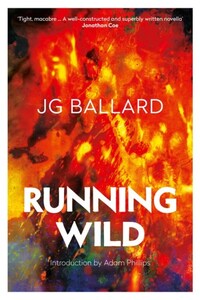Fourth Estate
An imprint of HarperCollinsPublishers
77–85 Fulham Palace Road,
London W6 8JB
www.harpercollins.co.uk.
First published in Great Britain by Hutchinson in 1988
Copyright © J. G. Ballard 1988
The right of J. G. Ballard to be identified as the author of this work has been asserted by him in accordance with the Copyright, Design and Patents Act 1988.
Introduction © Adam Phillips 2014
Interview © Vanora Bennett 2008
A catalogue record for this book is available from the British Library.
This novel is entirely a work of fiction. The names, characters and incidents portrayed in it are the work of the author’s imagination or are used fictitiously. Any resemblance to actual persons, living or dead, events or localities is entirely coincidental.
All rights reserved under International and Pan-American Copyright Conventions. By payment of the required fees, you have been granted the nonexclusive, nontransferable right to access and read the text of this e-book on-screen. No part of this text may be reproduced, transmitted, downloaded, decompiled, reverse-engineered, or stored in or introduced into any information storage and retrieval system, in any form or by any means, whether electronic or mechanical, now known or hereafter invented, without the express written permission of HarperCollins e-books.
HarperCollinsPublishers has made every reasonable effort to ensure that any picture content and written content in this ebook has been included or removed in accordance with the contractual and technological constraints in operation at the time of publication.
Cover by Stanley Donwood, with background colours partly formed from combustion of ammonium dichromate carried out by Dr Roy Lowry at Plymouth University; photographed by Anna Walker
Source ISBN: 9780006548195
Ebook Edition © OCTOBER 2014 ISBN: 9780008120269
Version: 2014-11-19
by Adam Phillips
‘I don’t think I’m allowed to forget Heart of Darkness. If the phone rings, it’ll probably be Joseph Conrad, saying, “Mr Ballard, you stole it all from me.”’
J. G. Ballard, The Hardcore 8, 1992
In an interview given in 1988, the year Running Wild was published, Ballard said that despite the variousness of his books he was still mostly thought of as a science-fiction writer:
The reason is, of course, that I take a hard, cruel look at the everyday reality around me in Western Europe and the United States, and I see science and technology playing an enormous part in creating the landscape of our lives and imaginations … As a writer I’ve always had complete faith in my own obsessions. It seems to me that the obsessional approach to life is very much the way in which the twentieth century conducts its business.
He is called a science-fiction writer because he takes ‘a hard, cruel look at the everyday reality’ around him. And he sees science and technology ‘creating’ our internal and external worlds. What makes a writer of science fiction – or, indeed, a writer, like Ballard, of utopias and dystopias, of satires and farces – is a certain way of looking at ordinary contemporary life. And it may seem cruel because it exposes what the everyday tries to conceal, and it is hard because it is unyieldingly unenchanted, and undistracted by what it sees.
One of Ballard’s obsessions was just how dystopian utopias always are, as the twentieth century made abundantly clear. Ballard’s heroes and heroines often have the idealistic monomania of Conrad’s Mr Kurtz in Heart of Darkness. They are people who want something so much that they forget all the other things they might want. And, indeed, all the things other people might want. It is the incredible cruelty people are capable of in realising their dreams and ambitions that haunts Ballard’s extraordinary fictions. Ballard’s look is cruel because of the cruelty he sees in everyday contemporary life. What he describes in Running Wild is the hard cruelty of parents being unduly kind and understanding to their children, parenting being one of the commoner ways people attempt to realise their dreams and ambitions. And how this particular hard cruelty – what Ballard calls ‘the regime of kindness and care which was launched with the best of intentions’ – gave birth to its ‘children of revenge’ (it gives nothing away – because Running Wild is determinedly not that kind of mystery story – to say at the outset that this is a book about a group of children who kill their parents). The phrase, as always with Ballard, whose verbal subtlety is often preternatural, is ambiguous. It makes us wonder what kind of revenge the parents in this terrifying novel may have been taking by treating their children with this particular kindness and care that is itself a regime? And why it might be that the children want to take their revenge? Why has revenge become the issue? If the road to hell is paved with good intentions, what kind of intentions should we have?











